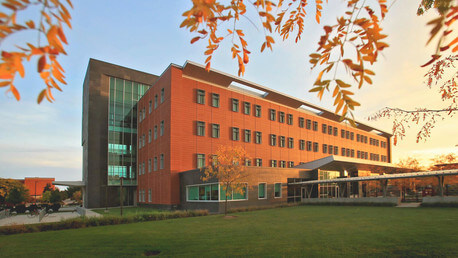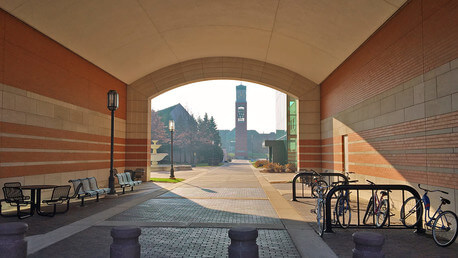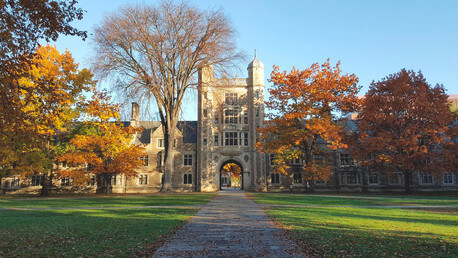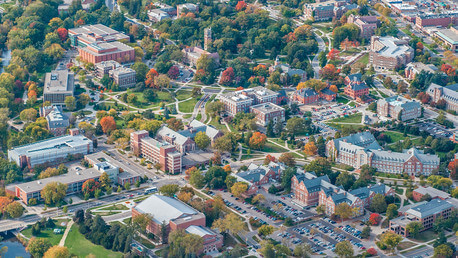Tuition, Cost & Aid
Affordability and Cost
Average Net Price Average net price for full-time, first-time degree/certificate-seeking undergraduates paying the in-state or in-district tuition rate who were awarded grant or scholarship aid from federal, state or local governments, or the institution. Other sources of grant aid are excluded. Aid awarded anytime during the full aid year is included.
Average net price is generated by subtracting the average amount of federal, state or local government, or institutional grant and scholarship aid from the total cost of attendance. Total cost of attendance is the sum of published tuition and required fees (lower of in-district or in-state), books and supplies and the weighted average room and board and other expenses.
Average net price is generated by subtracting the average amount of federal, state or local government, or institutional grant and scholarship aid from the total cost of attendance. Total cost of attendance is the sum of published tuition and required fees (lower of in-district or in-state), books and supplies and the weighted average room and board and other expenses.
$19,183
Tuition
| In-State Tuition In-state tuition is the tuition charged by institutions to those students who meet the state's or institution's residency requirements. In-district tuition is the tuition charged by the institution to those students residing in the locality in which they attend school and may be a lower rate than in-state tuition if offered by the institution. | $32,580 |
| Out-of-State Tuition Out-of-state tuition is the tuition charged by institutions to those students who do not meet the state's or institution's residency requirements. Out-of-district tuition is the tuition charged by the institution to those students not residing in the locality in which they attend school. | $32,580 |
Additional Costs
Room and Board The weighted average for room and board and other expenses is generated as follows:
| $10,960 |
| Books and Supplies | $800 |
| Tuition Payment Plan | Yes |
Financial Aid: visit page
Financial Aid Email: financialaid@arbor.edu
Aid & Grants
0
100
79%
Need Met
Students Receiving Gift Aid Percent of undergraduate students awarded federal gift aid. Federal gift aid includes any grant or scholarship aid awarded, from the federal government, a state or local government, the institution, and other sources known by the institution. Students Receiving Grants Percent of undergraduate students awarded grant aid. Grant aid includes any grant or scholarship aid awarded, from the federal government, a state or local government, the institution, and other sources known by the institution. Students receiving state aid Students receiving federal aid
26%
Average Aid Per Year
$20,677
26%
Average Federal Grant Aid Per Year
$6,625
Average Institution Grant Aid Per Year
$17,915
36%
Average State Grant Aid Per Year
$2,607
27%
Average Federal Grant Aid Per Year
$6,625
Average Grant & Scholarship By Family Income
Total Needs Based Scholarships/Grants Total amount of grant or scholarship aid awarded to all undergraduates from the federal government, state/local government, the institution, and other sources known to the institution.
$18,846,512
Total Non-Need-Based Scholarships/Grants
$293,422
Student Loans
Students Borrowing Loans Loans to students - Any monies that must be repaid to the lending institution for which the student is the designated borrower. Includes all Title IV subsidized and unsubsidized loans and all institutionally- and privately-sponsored loans. Does not include PLUS and other loans made directly to parents.
68%
Average Loan Amount Per Year
$7,050
Students receiving federal loans
67%
Average Federal Loans Per Year
$5,383
Average Other Loans Per Year
$12,705
Average Debt at Graduation The median federal debt of undergraduate borrowers who graduated. This figure includes only federal loans; it excludes private student loans and Parent PLUS loans.
$24,260
Loan Default Rate
4%
US National: 7%
Median Monthly Loan Payment The median monthly loan payment for student borrowers who completed, if it were repaid over 10 years at a 5.05% interest rate.
$258
What Students Are Saying
No matter what your interests are, Spring Arbor University allows you to be a part of a fun-loving community. Spring Arbor has the small community atmosphere that allows you to have strong connections with others, yet has a vast amount of opportunities to keep you busy and involved. At other universities you might spend less, but get half of the college experience. This is really the best time of your life, and you do not want it to be wasted with trivial opportunities, do you?
Marcia from Dorr, MI
Tuition is high, but every dollar is worth it.
Marissa from Tecumseh, MI
This is an expensive school and I will probably be in debt up to my ears when I graduate but so far I think I'm getting what I paid for, which is a healthy Christian atmosphere and higher learning. However, if you are considering coming here be prepared to apply for a lot of scholarships and financial aid, unless you are made out of money that is. Thankfully Spring Arbor does offer a lot of aid and they will work with you to find the best possible payment plan so don't let the money issue stop you.
Rachel from Jackson, MI
SAU looks like it is going to be EXTREMELY expensive, but the admissions counselors work very hard to get you the most money they can. The yearly cost at SAU (including tuition, books, and meals) is about 30k. For me right now, everything is covered except for about 10k. (but I am applying for a music scholarship this week)
Kayla from Hanover, MI
Christian college has is sticker price, but the education received at SAU seems to be worth it.
Elizabeth from Grand Rapids, MI
Its expensive... thats rough.
Anonymous
Spring Arbor is expensive, but the school offers a great amount of scholarships and grants. There's also the Loan Repayment Assistance Program which helps you pay back some of your loans after graduation, if your income is less than $37,000 a year (rejoice, teachers and pastors).
Olivia from Fowlerville, MI
Taking classes for a bachelor's is going to cost a lot more than what you would be paying for classes at a community college. I feel I am getting what I am paying for though.
Student from Northern MI











